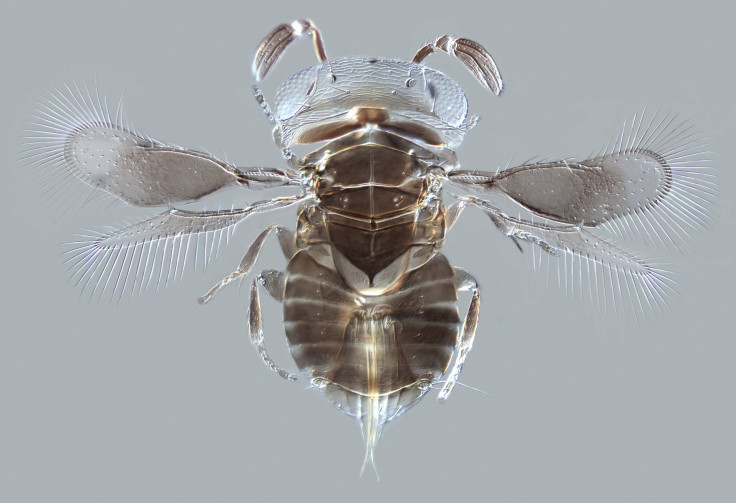Genital Genius: Male Wasps Deter Prey By Impaling Them With Penis Spines [Watch]
KEY POINTS
- The male wasps used two parameral spines in the genitalia to perform 'stinging' behavior
- The pseudo-stinger did not play a role in the mating process
- The study highlights the importance of male genitalia as an anti-predator defense
A revolutionary study has found a purpose for the fake stingers that male wasps have on their genital region. These pseudo-stingers thwart predators and save males from being eaten.
The study, published in the journal Current Biology, focused on a species of wasps commonly called mason wasps. It was observed that when male mason wasps were put in close proximity to tree frogs, the frogs tried to swallow the wasps but were not able to succeed every time.
"Male wasps (Anterhynchium gibbifrons) were frequently observed to pierce the mouth or other parts of frogs with their genitalia while being attacked," authors of the study, Shinji Sugiura and Misaki Tsujii of Kobe University in Japan wrote, The Guardian reported. The insects also bit the frogs.
The idea to investigate the function of pseudo-stingers on male wasps came to the researchers when they were attacked by one.
"We were accidentally stung by males of the mason wasp A. gibbifrons while investigating its life history. The male A. gibbifrons used two parameral spines in the genitalia to perform 'stinging' behavior. Unlike female stings, the male genital spines did not emit venom. However, the male piercing caused a pricking pain," the authors wrote.
The authors were intrigued by this as they could not see the male wasps exhibiting the same behavior when mating with a female. This meant that the pseudo-stinger did not play a role in the mating process.
To get to the bottom of this mystery, the researchers designed an experiment wherein 17 male wasps were housed together with 17 tree frogs. It was observed that while all the frogs attacked the wasps, more than a third spit out the insects.
Interestingly, when the male wasps with their genitalia removed were introduced to the tree frogs, all of them ate the insects despite being bitten.
"Therefore, genital spines of male genitalia appear to play a role in preventing tree frogs from swallowing male wasps," the scientist duo wrote.
"This study highlights the importance of male genitalia as an anti-predator defense and provides a new perspective for understanding the ecological roles of male genitalia in animals," they further wrote, reported ScienceAlert.
However, it should be noted that when the male wasps were introduced to the pond frogs, no such deterrence was observed. The pond frogs ate both the male and the female wasps without prejudice. The venom-emitting stingers and the pseudo-stingers did not seem to have an effect on these amphibians.
The researchers are sure that the same defensive mechanism is used by many other species of male wasps that have a pseudo-stinger.
"The defensive roles of male genitalia as counterattack devices will be found in many wasp species, of which males have pseudo-stings in their genitalia," the researchers concluded.

© Copyright IBTimes 2025. All rights reserved.





















